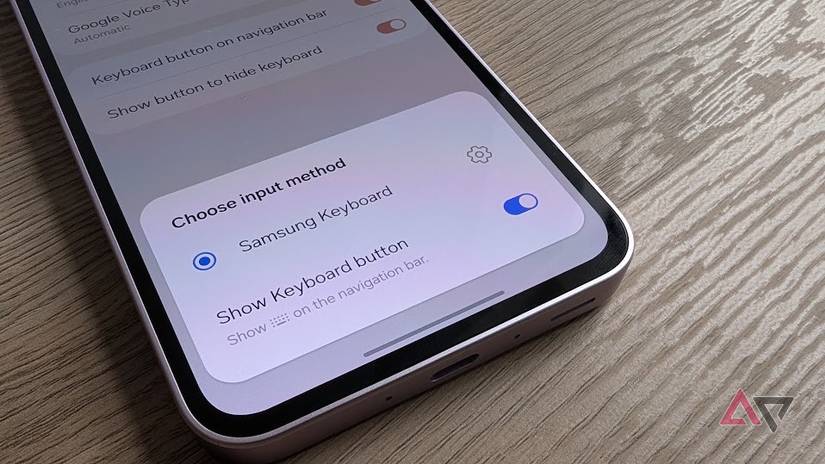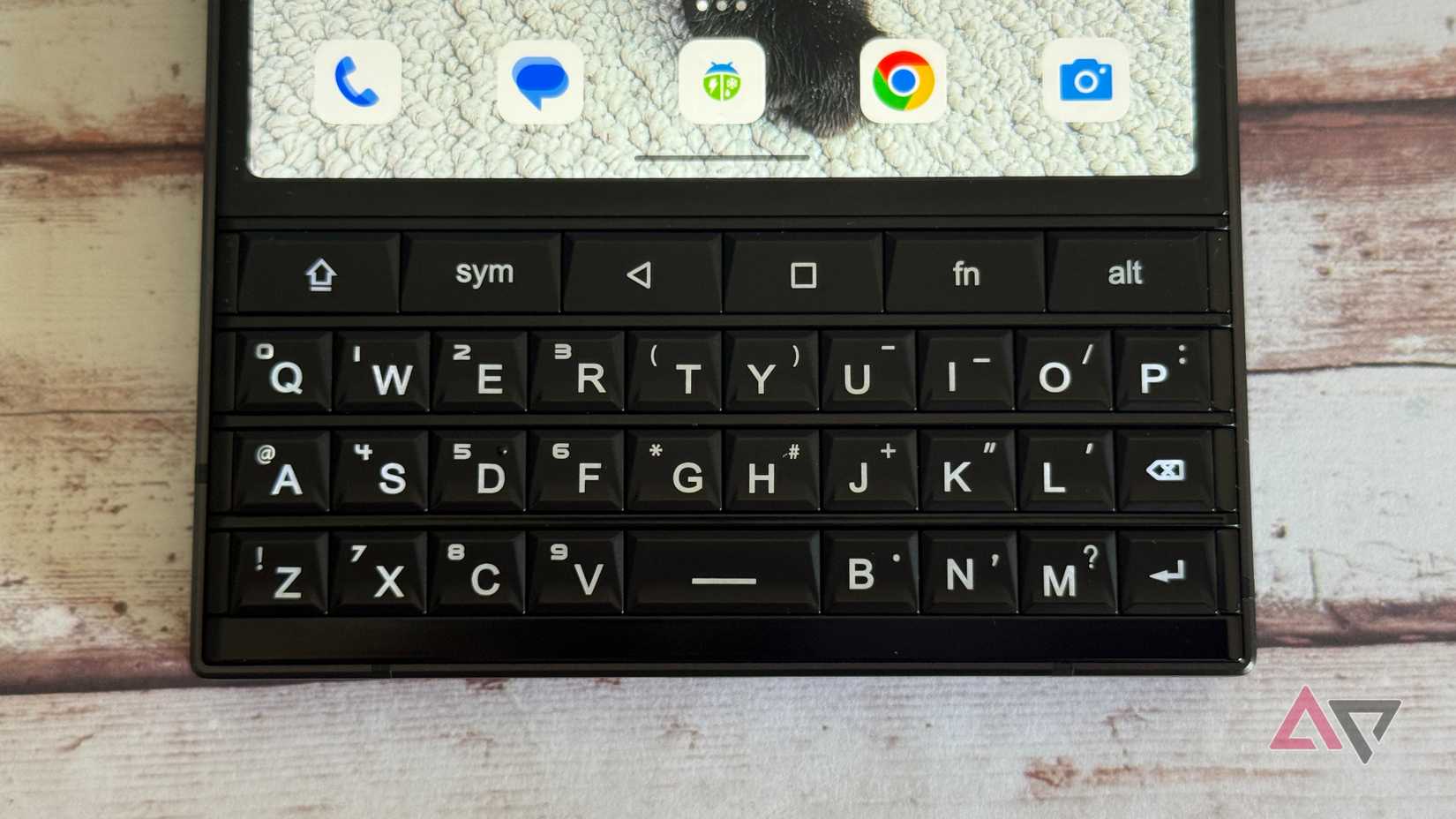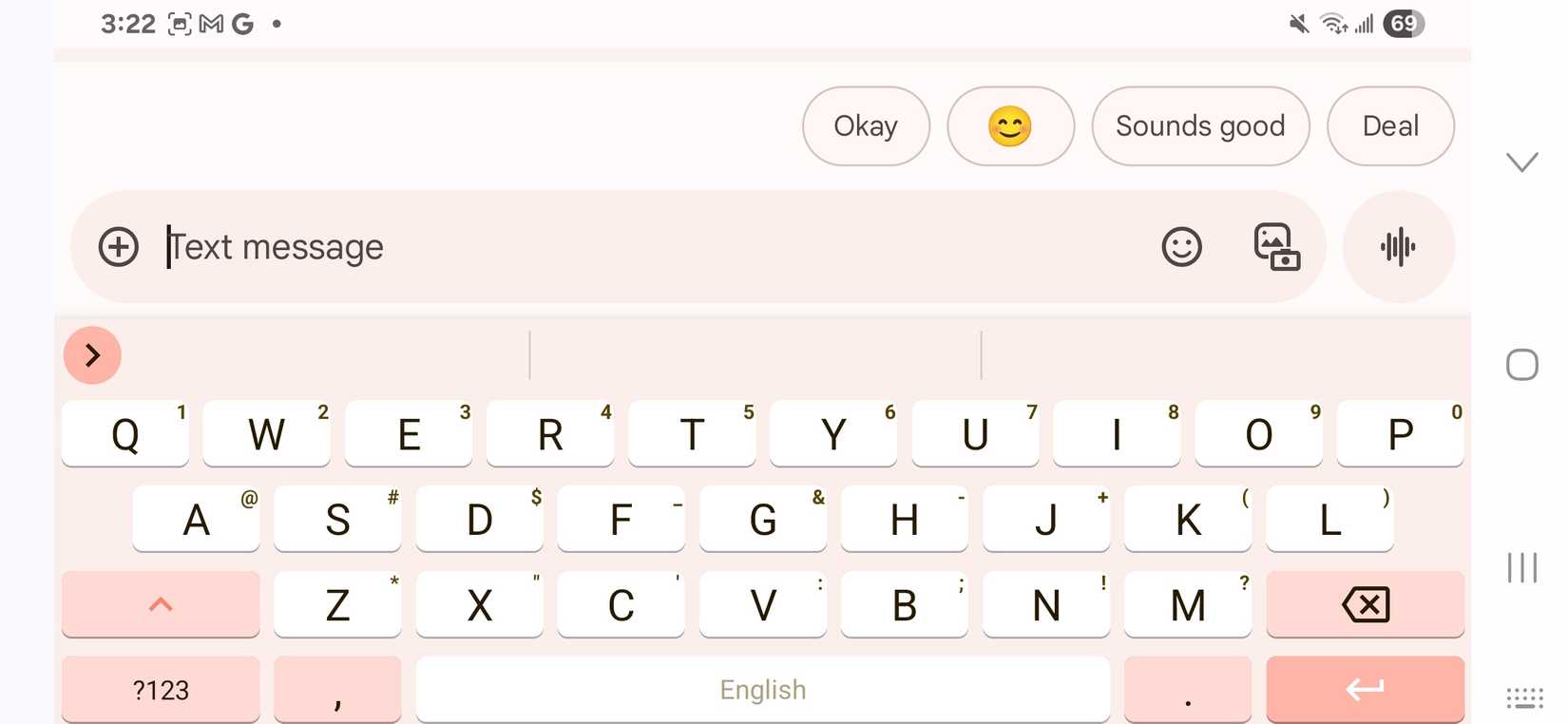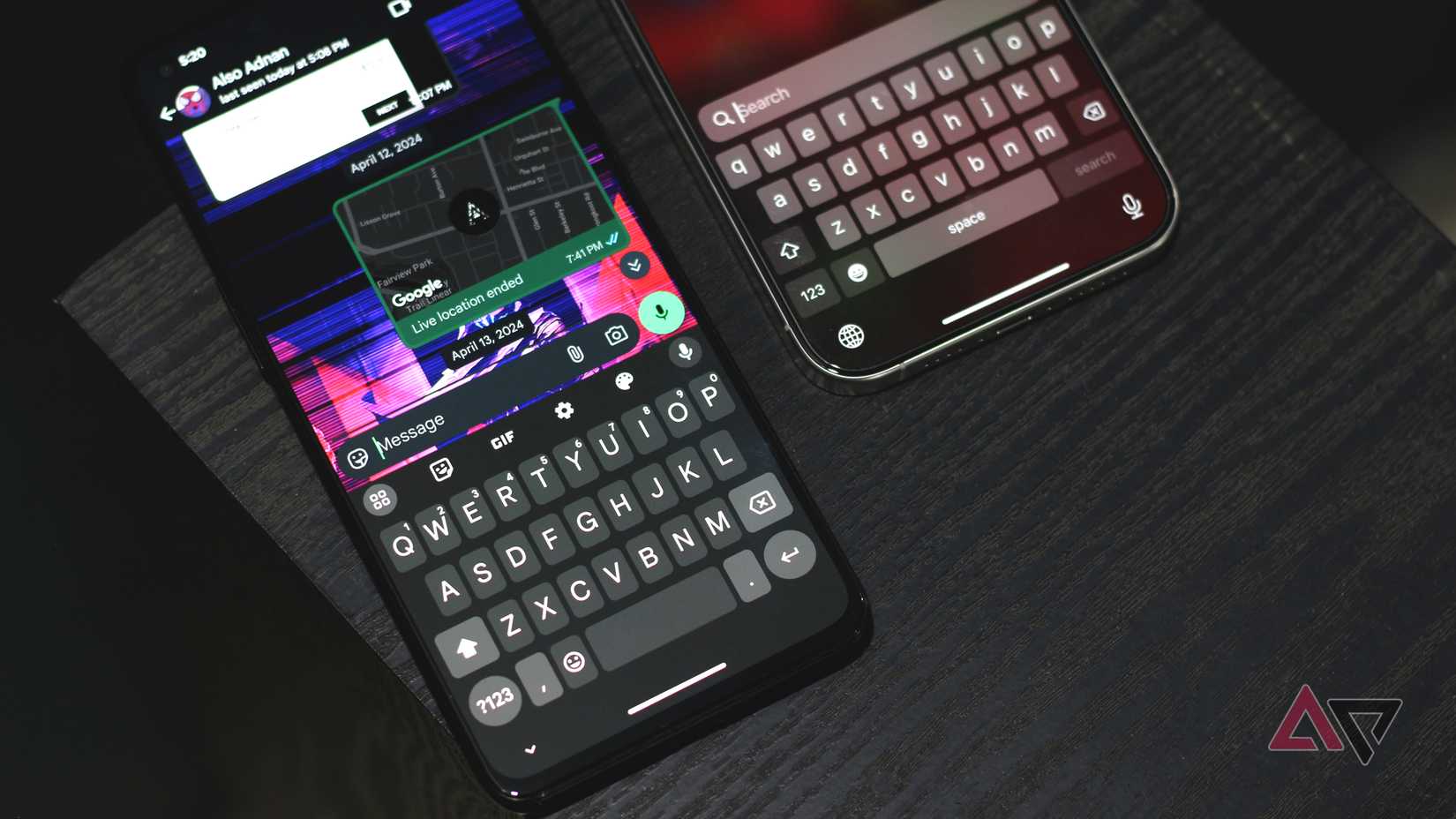As a devoted Samsung Galaxy user, I tried for years to stick with the default keyboard on my primary Samsung device.
I will occasionally reinstate the Samsung Keyboard to see if my opinion changes. It has not. My experience remains mixed.
Gboard is a popular alternative. It is the one I’ve turned to the most when I need a break from the others.
But I need to break away from Google. I depend on Google products far too often, and as a privacy-conscious user, that’s not healthy for me.
Until last year, I found an open source keyboard that works quite well. I gave it a try after reading Android Authority’s review of an open source Gboard alternative.
HeliBoard is a privacy-conscious option based on AOSP/OpenBoard.
While HeliBoard is not perfect, it has done a stellar job at opening my eyes to less mainstream choices.
Here’s what I liked and disliked about this privacy-focused open source keyboard app.
What I like about HeliBoard
Besides being great for privacy
I’ve been working harder to minimize the number of apps that use my device’s permissions. I would often select permission boxes without thinking twice.
But I want that to stop. I aim to enhance my awareness of the permissions I assign to each app. So this year, I have made it my goal.
It’s over halfway into 2025, and I am working harder to limit the available permissions.
The biggest draw was HeliBoard’s offline usage. You don’t need to enable internet permissions to use HeliBoard.
Outside of its privacy focus, I like HeliBoard’s layout. I appreciate that I can resize the keys, and I am comfortable using it in both portrait and landscape modes.
I use both modes depending on the app I’m using. For longer messages, I prefer landscape, but for filling in empty fields, I stick to a portrait keyboard.
Another sore spot with keyboards is autocorrect and predictive text. Every time I returned to Samsung Keyboard, I remembered why I never wanted to stick with it.
I write a lot of technical words or gaming jargon, which confuses my Samsung Keyboard. I’m also lazy about adding every new word to my personal dictionary.
Additionally, my experience with Samsung Keyboard (not so much with Gboard) is that the suggested words feature to add new words doesn’t always appear when I’m retyping those words.
I’ve also experienced Samsung Keyboard’s autocorrect changing words that have been misspelled before (or recognizing words that were emoticon shortcuts but using them to correct other words). I had to manually re-correct it.
That’s another reason why I couldn’t mesh with the Grammarly Keyboard.
Grammarly Keyboard’s writing suggestions would drive me crazy. Plus, depending on what I’m doing, I wouldn’t want to overly formalize my writing (especially not when I am chatting among my social groups).
This is where I like HeliBoard. It allows me to personalize my keyboard according to my needs.
Firstly, HeliBoard’s predictive text/auto-correct still needs work. It isn’t perfect. But at the very least, it is still a cut above what I get from Samsung Keyboard.
Secondly, when I practice in another language (which for me would be French), the typing experience while switching between languages is smooth, even when I select Canadian French as a supported language.
The only issue is that the supported multilingual typing (languages with dictionaries) is limited, and you have to set this up for each selected layout.
This worked fine for me since I only needed to add French and English, but for others, it might not.

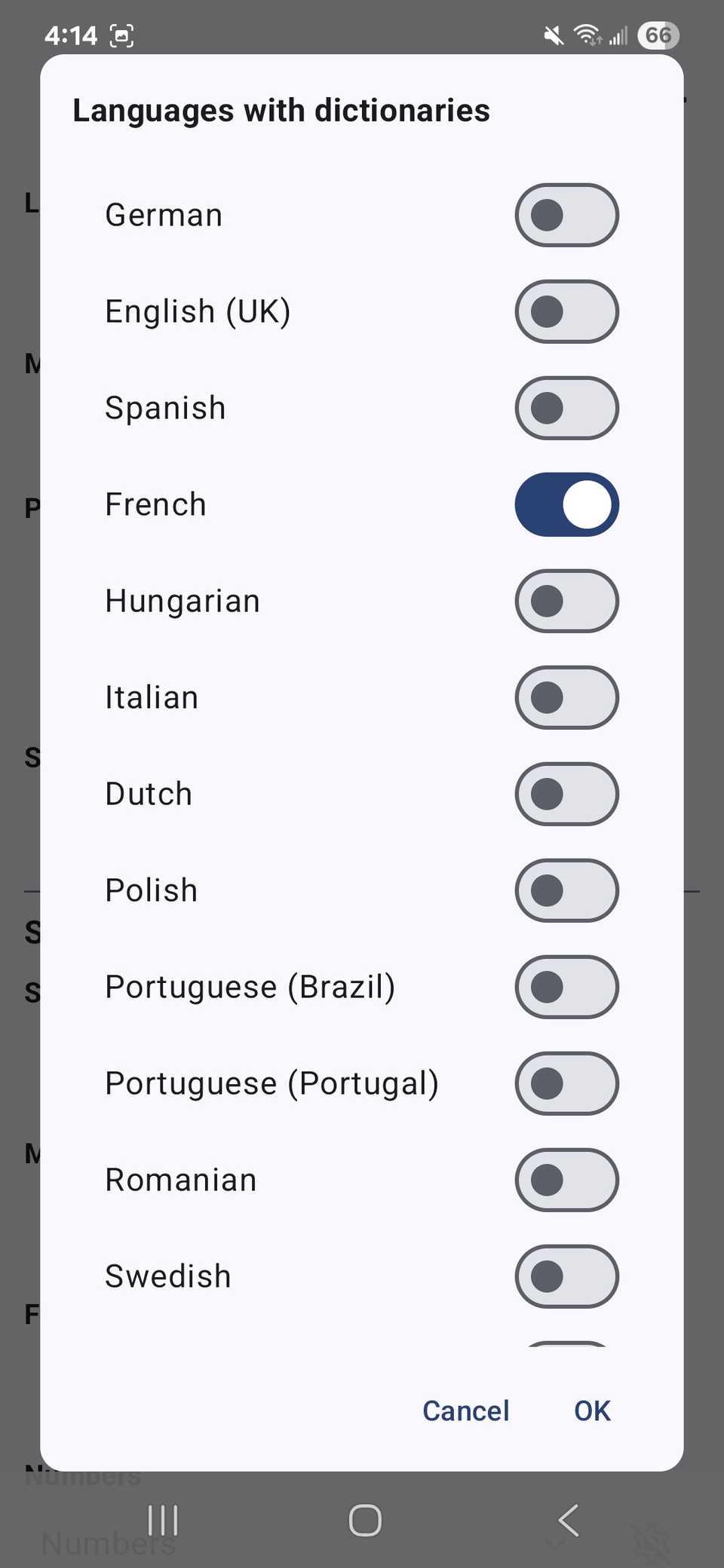
What I had to get used to with HeliBoard
Props to all of HeliBoard’s customization options
I am definitely in the boat that it is better to have more customization options than none at all. Everyone uses their keyboard differently.
For keyboards, I am somewhat of a minimalist. I actually find Gboard’s features too bloated (I’m a non-believer in Emoji Kitchen).
On the other hand, I’m also someone who is used to downloading a keyboard app, and everything is mostly set up from “out of the box.”
HeliBoard is different. You are encouraged to customize your options when you download the app.
For me, that took some time getting used to. I can design my keyboard the way I want it. I like making my keys stand out.
Sometimes, my design choice is a bit too chunky for other people’s tastes. I love replicating the keys to something similar to an actual keyboard, giving them a bolder look with some extra shadowing.
Another option that I quickly got accustomed to was the toolbar shortcuts.
For example, when I don’t want to use all the toolbar shortcuts. I can toggle them on and off how I please.
By reducing the number of toolbar shortcuts, I see fewer of them displayed on my keyboard, making it look a lot cleaner and less overwhelming to use.
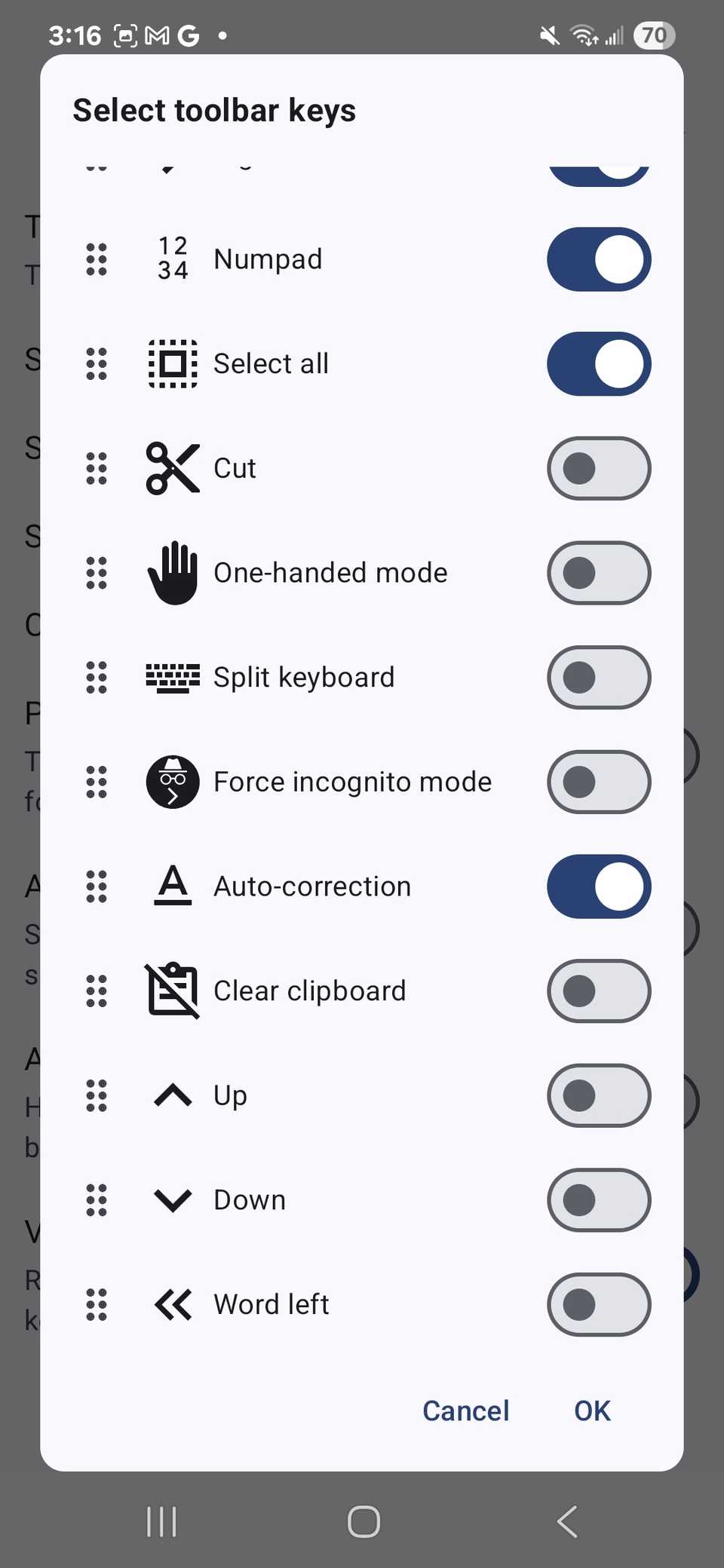
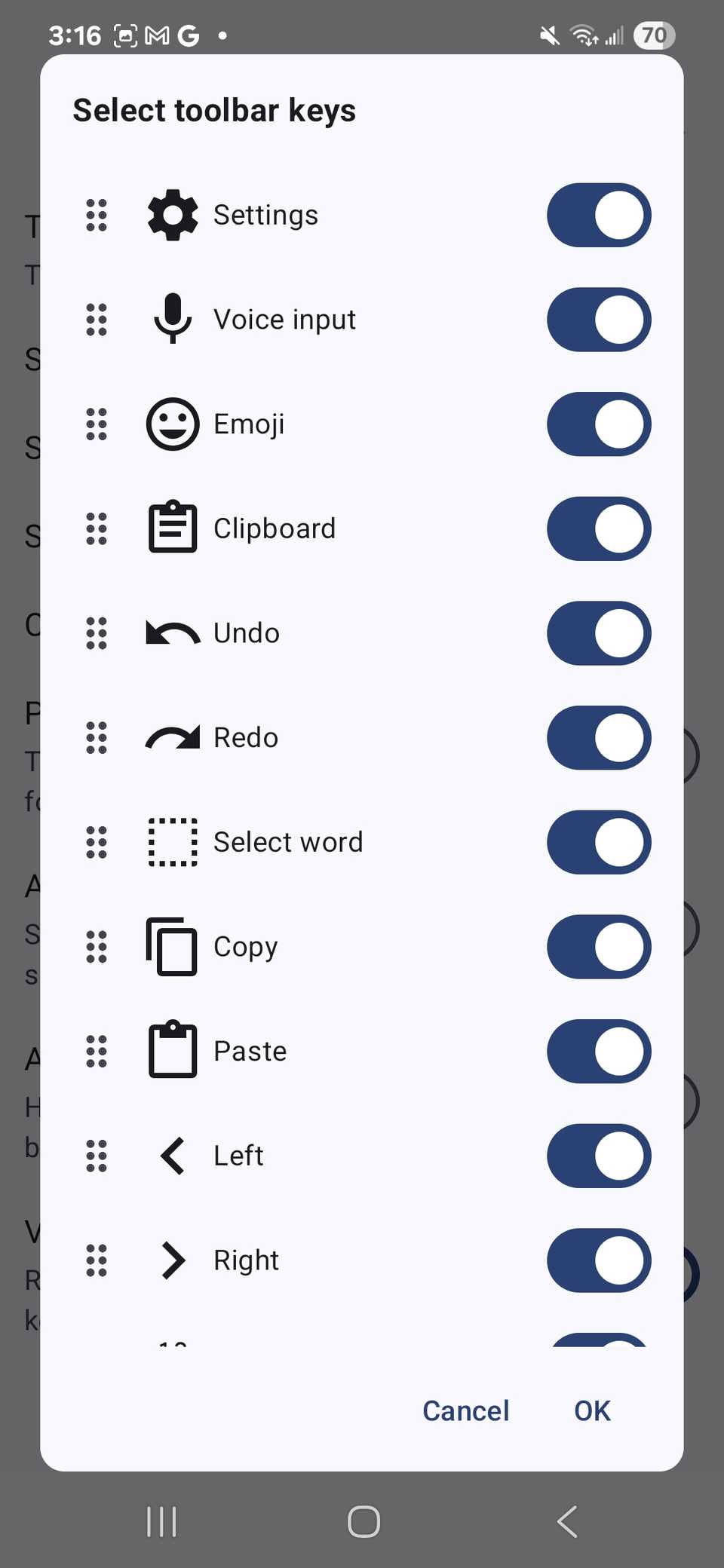
You can also re-order them by dragging them to the top when in the Select toolbar keys screen.
What I don’t like about HeliBoard
The experience isn’t flawless
While Gboard remains popular among the masses, I still like options.
I still have a heavy dependency on the Play Store. Otherwise, I use the Galaxy Store.
Installing HeliBoard isn’t as easy as grabbing the app from a popular app store. Instead, you have to download the APK from GitHub or use F-Droid to obtain it.
I opted into F-Droid since I’ve used it before. It is also easier to keep it up to date.
Another concern is the update cadence. Updates are not released consistently.
Additionally, depending on how you obtain HeliBoard, the updates may not be automatic (you will need to configure F-Droid to update apps automatically).
The other major problem is that the app can be buggy.
An inconsistent update schedule would also mean that bugs might take longer to address compared to popular options, such as Gboard and Microsoft SwiftKey.
However, if you encounter any issues with HeliBoard, it is recommended that you open an issue on the GitHub page to help the developer address the problem.
Keep trying out more keyboard options
Just because one keyboard option worked well for me doesn’t mean it will work well for you.
I’ve been stubborn about trying to like Samsung Keyboard, even though you can still make changes using the Good Lock app (Keys Cafe).
On the other hand, I always liked Gboard. Google’s keyboard app remains stable and reliable. It has depth.
But this year, I am trying to keep an open mind and not immediately just re-attach myself to Google.
Microsoft SwiftKey is also a decent choice. But from my experience, the predictive text didn’t work well — and the UI just never clicked with me.
Overall, keyboards remain a highly subjective experience. You might fall in love with a completely different option compared to the one I’ve mentioned.
Just make sure to give every app at least two weeks to adapt to it.


